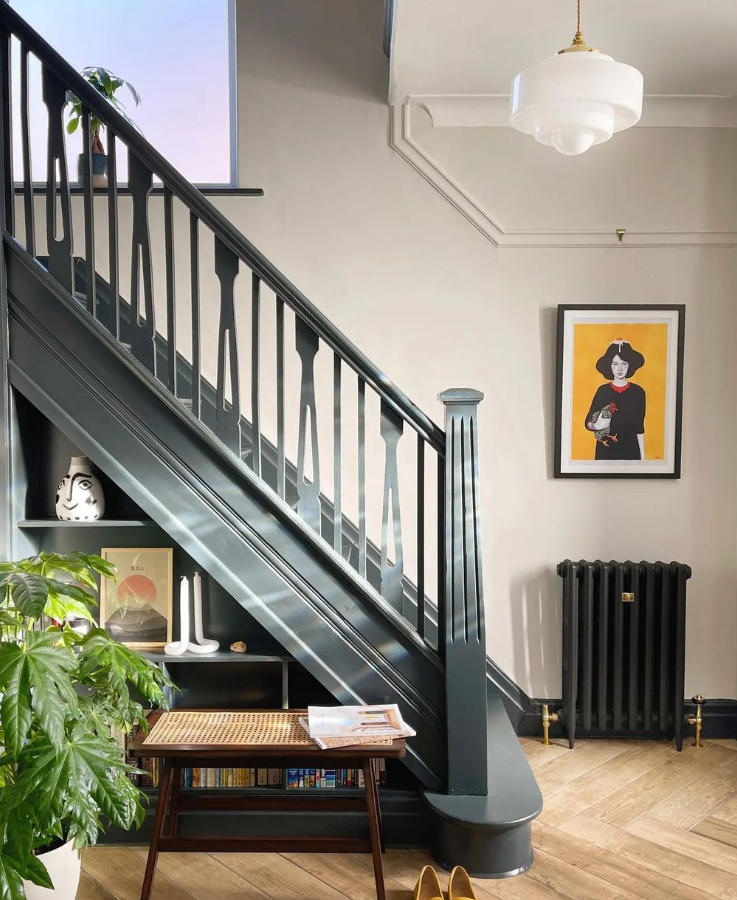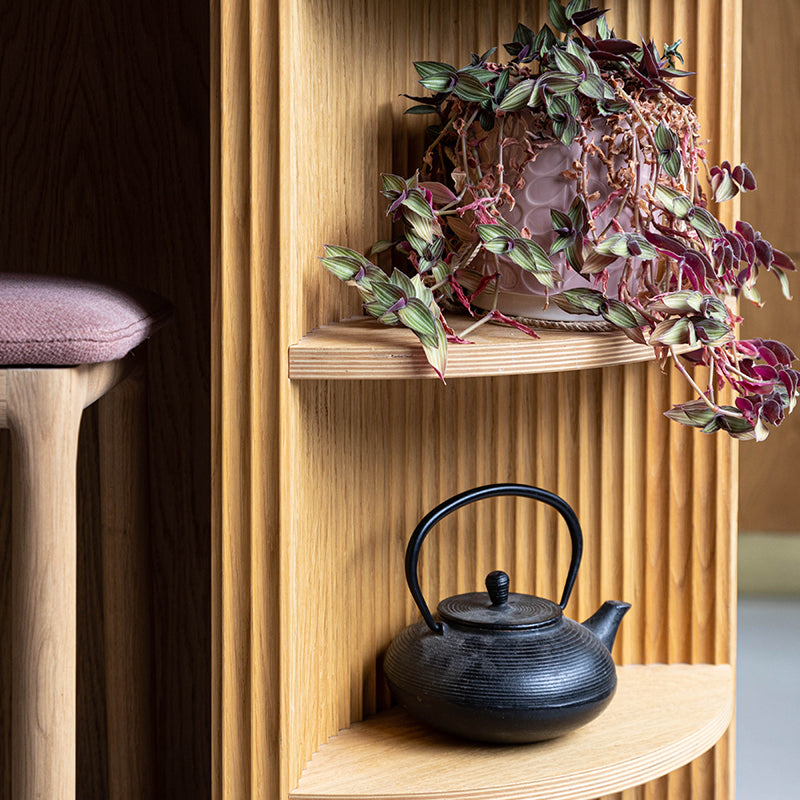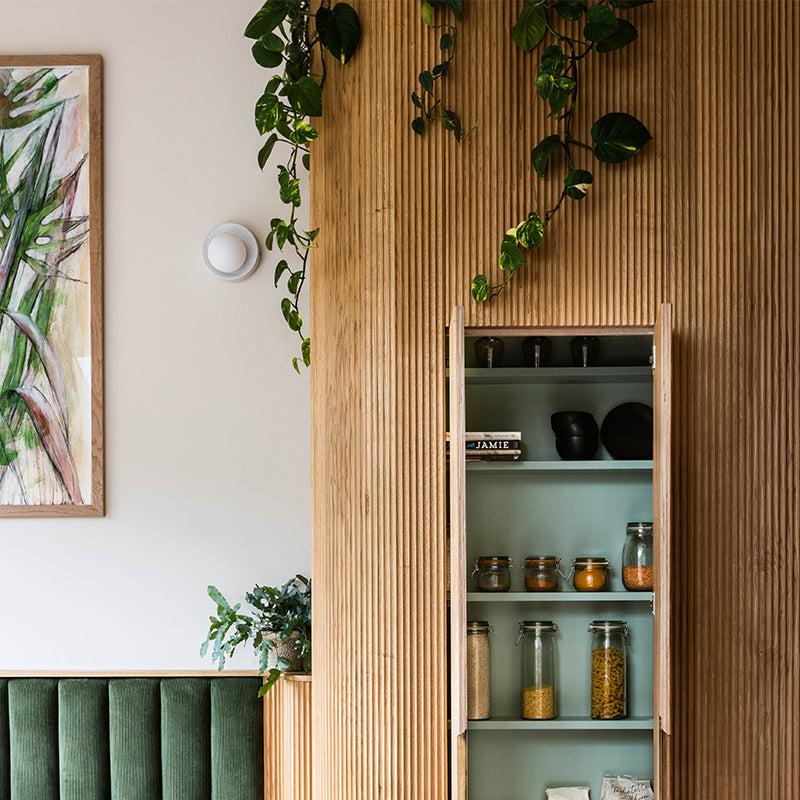What Is Japandi Design? Tips, Brands and Products to Inspire Your Next Design

Japandi, or the combination of Scandi and Japanese styles have come together over the years to become a cultural fusion of interior design.
The term “Japandi” is used to describe this combination, which is often seen in Scandinavian furniture mixed with Japanese art and architecture. The result is a style that is both serene and modern, with an emphasis on minimalism, simplicity and natural imperfection"
If you break Japandi down into its basic elements, you can really start to understand exactly why Scandinavian and Japanese design comes hand in hand.
The main characteristics of Japandi interior design include:
- Natural materials, including wood and stone
- Minimalist design that emphasizes functionality over form
- A focus on the intentional use of space in the home (i.e., how items are arranged and used daily to create ease and function in line with design.)
- The intentional use of imperfect items or items that spark meaning and inspiration in day to day life, creating function even in simple decoration.

On their own, Scandi and Japan design are known as the following:
Scandinavian Hygge - Scandinavian Hygge is a lifestyle that is all about creating a cosy and comfortable home. It's about feeling safe, at ease, and happy in your surroundings. It's about being present in the moment and enjoying quality time with those you love. And it's about making space for reflection and self-care.
Hygge interior design embraces many elements of Scandinavian cultural traditions: wood, light, textiles, candles, warm colours (especially reds), and natural materials such as stone and wood as well as woollen fabrics like felted wool blankets for example.
Japanese Wabi-Sabi & Feng Shui - One of the most important things about Japanese Wabi-Sabi & Feng Shui interior design is that it's all about making your home feel like a place you can relax in, not just a space to be functional.
In traditional Japanese homes, there are rarely hard right angles or straight lines—it's all curves and soft edges. This makes the space feel more comfortable and inviting to the eye. You also want to make sure that every piece of furniture or art has some sort of meaning to you, so that way when you look at it, it reminds you of something positive or inspiring.
Another thing is that when working with colour palettes for your Wabi-Sabi interior design project, you want to focus on using muted tones instead of bright ones—this gives off more of an earthy vibe that feels more natural and calming.
When it comes to Feng Shui, one of the most important things is making sure everything in your house is balanced: from how much light enters through windows (not too much), how many doors there are (not too few), where furniture sits in relation to walls (not too close) etcetera etcetera etcetera).

So, now we understand what Japandi is, we need some examples of Japandi products and interior design in action. Below is a list of some of our current favourite designers, brands and even some of our own lights that have inspiration in these styles.
KONK furniture
“A mixture of passionate carpenters and dedicated metalworkers, we have made a name for ourselves by producing high-quality, sustainable, and beautiful solid wood furniture that is built to last."
Konk are a brilliant example of a British brand taking influences from this fusion style. Their naturally soft styled wood furniture screams Japandi. With a special mention of their bedframe designs that utilise some truly stunning woodworking.
Image copyright: konkfurniture.com

Japandi Supply House
Other than Japandi in the name, this two person brand have created an online store and curation for all things Japandi inspired. Here you can find a their rotating stock of Japandi picks shipped worldwide.
“We curate Japandi goods from around the world to share with you. Our curated partners have unique Japandi goods and share our values of minimal and timeless design, high-quality natural materials meant-to-last and an emphasis on comfort through thoughtful design and material.”
Photos from shopjapandi.com/pages/about

Alice in Scandiland
Alice is based in Cornwall and has a dedicated online journal, as well as a store focused on interior design furnishings inspired and tied to Scandinavian design. There is a really wide range of different Scandi styles available here that work perfectly in the Japandi ecosystem.
We particularly recommend the handmade ceramics section of the store, rich with organic shapes, natural tones and subtle kitchenware. You can also find some stunning minimal rustic pieces such as stools, tables and bowls in the furniture section that tie the natural imperfections of Wabi Sabi with the simple woodwork of Scandi design.
Photos from https://www.aliceinscandiland.com

What about Spark & Bell and lighting for Japandi spaces?
It only makes sense to recommend some of our own products that work with these styles and ideas in interior design. At Spark & Bell we have a firm belief that the design of interior products should be done in a way that remains classic, does not follow a quick trend and remains a staple in the future.
Does Japandi fit with in with our design ethos?
Japandi, while gaining traction in recent years, is rooted in crucially classic interior design styles that as mentioned are influenced by culture and not popularity. When culture and design overlap, that is where we like to be. That is one of the aspects of product design that we can call ‘Classic’.
Our top suggestions for choosing lights for Japandi:
A quick tour of our shop and you will find new items that jump out as contenders. Hand-crafted hardwoods, natural materials and curvature are all available.
Cara Wall & Pendant Lights:
Our Cara range may be the pinnacle of our Japandi compatible design. Locally sourced hardwood is carved into a gentle curve, following the grain and natural imperfection of the wood. We have even incorporated Spalted wood types, exotic but natural processes of tree decay; the perfect metaphor for embracing Wabi Sabi natural imperfection.
Opal Wooden flush wall lights:
A small but stunning little wall lamp design which remains one of our customer favourites. Updated with the same woodworking design principles of the Cara, it's a clear and easy winner for pairing and complementing in Japandi design with Oaks and Beech for more Scandi lead and Walnuts or Blacked Oak for a deeper Japanese somber feel.
Our Rattan Ciara Pendant & Ashford Raffia Pendant
Excellent statement pieces for Japandi design with large natural colour curved and stacked shade designs. If you're looking for a finishing piece to bring both ambient and functional lighting into a Japandi home then these two pendants are a great starting point.

We would love to hear about your favourite interior design themes and ideas. You never know, we might just write about them. Pop a comment below and choose our next interior design theme post.






